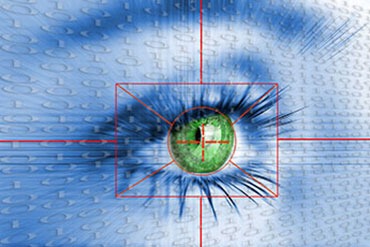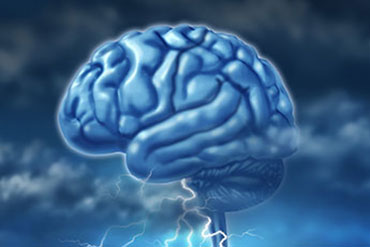EMDR Therapy and Depression
 Eye Movement Desensitization and Reprocessing (EMDR) is a form of “eye movement therapy” which is a type of psychotherapy.
Eye Movement Desensitization and Reprocessing (EMDR) is a form of “eye movement therapy” which is a type of psychotherapy.
EMDR owes much — if not all — of its original roots to methods that were developed in Neuro Linguistic Programming (NLP).
EMDR therapy can rapidly help people to resolve painful or disturbing memories when used as a therapy for trauma. Because many people with depression have also experienced trauma, EMDR is an effective natural depression remedy when combined with tradition depression therapy.
There are a number of phases in an EMDR treatment, but the majority of the focus is on discussing a particular memory, while alternately having the client move their eyes in a side-to-side motion. This motion, called “Bilateral Stimulation,” appears to help facilitate communication between both hemispheres of the brain.
How EMDR Therapy Can Help
There are two primary ways in which EMDR therapy can help; 1) accessing or retrieving repressed memories, and 2) processing past or present traumatic events.
In dealing with memory retrieval, EMDR therapy is based on the idea that some of the fears we all face are merely earlier life experiences that are locked in our nervous system. These are stored as trauma in the brain, in the form of memory networks.
In trauma, great or small, information processing is disrupted because the integration of components of an event is blocked. As a consequence, when the memory is brought to mind, the feelings are re-experienced rather than simply remembered. This can be either conscious or unconscious and accounts for much of our emotional pain.
EMDR can help to restart and accelerate processing. When this happens, it is possible to learn what you need to know from these difficult experiences and discard the rest. Once this is done, you can choose your actions rather than being propelled by automatic re-actions.
As EMDR accelerates information processing, it can be applied to a wide range of the problems that hold us back in life. As science uncovers, more and more, how the brain/mind functions, we are learning that psychotherapy which focuses on trauma-resolution of all kinds actually helps and heals an extensive range of maladies not previously thought to be trauma-related. EMDR helps top further facilitate this process.
Areas That EMDR Therapy Addresses
Due to the historical success of applying EMDR to certain areas of distress, EMDR psychotherapists now routinely treat clinical problems where EMDR has been seen to produce considerable success:
 Posttraumatic stress
Posttraumatic stress- Acute stress
- Generalized anxiety
- Depression and depressed mood
- Acting-out problems in children and adolescents
- Sleep disruptions and nightmares
- Phobias
- Substance use and impulse control disruptions of many kinds
- Anger management problems
- Chronic pain management
- Abuse and Trauma
- Grief and Loss
- Relationship Concerns
- Self Esteem
- Codependency
- Performance Enhancement
Specific results will vary from person to person. Speed of healing for single event traumas has been demonstrated by research to take one to three 90 minute sessions for about 80 to 90% of clients. Those who have an early history of trauma, abuse or neglect will take correspondingly longer to heal than those recovering from a single event trauma. In addition, clients and therapists alike report that healing through EMDR is more rapid than traditional approaches to talk therapy.
EMDR Therapy and NLP
Some of the methods I combine with EMDR to increase its effectiveness include hypnotherapy, Neuro-linguistic Programming (NLP), and cognitive/behavioral techniques. Some of my EMDR clients are referred to me by other therapists to work on unresolved trauma. When this happens, we will first meet in an initial 45-minute session so I can understand your goals and expectations and describe the procedure. The second meeting is a double session to see how you respond to the technique. After that, we schedule meetings at a pace that makes sense to both of us if you plan to remain involved with your referring therapist during EMDR. It is not necessary to do EMDR every week to derive significant benefit.
My EMDR Training
I was fortunate to have received my EMDR Level 1 and Level 2 Training as well as my supervision from Dr. Philip Manfield at John F. Kennedy University, the same school where I recieved my Masters in Psychology. I blend my EMDR training with my education and training in in Neuro-linguistic Programming (NLP) because EMDR is a practice that was developed in NLP.
I utilyze EMDR in the form of tactile, autitory and visual stimulation, and by use of a lightbar. The light bar utilized by some EMDR therapists has been known to cause seizures and pseudo-seizures. Please talk to your neurologist prior to using a light bar.






